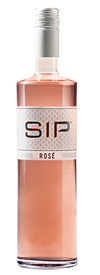Summer is here, and it’s time to start drinking more Rosé. Well-made examples of Rosé bridge the gap between red and white wines. Generally, using red grapes and white wine production methodologies Rosé’s tend to lean toward the structure of red wines and many of the refreshing qualities of white wines. That’s an oversimplification, but the real point is that when you drink a good Rosé, you’re in for the best of both worlds.
To be clear, when I use the word “good” here, I’m talking about dry Rosé’s, which have a long and storied history in many countries around the world. What I’m not referring to is White Zinfandel, Blush wines or other insipid offerings that lean closer to grape juice than wine. Here are four currently available Rosé’s you should consider keeping in your refrigerator all summer long.

El Coto de Rioja 2015 Rosado ($12)
This Rosé from the Rioja region of Spain was produced from equal parts Tempranillo and Garnacha. The color is an intense bright pink. Aromas of red cherry and watermelon light up the nose. The palate is loaded with all manner of juicy, red fruit flavors. Bits of candied apple emerge on the finish along with wisps of savory herbs. Firm acid add to the refreshing and mouth-watering nature of this wine. Year after year, this is one of my favorite Rosé values. It’s a consistently delicious crowd pleaser, so stock up.
Sip 2015 Rosé ($15)
The fruit for this wine (entirely Pinot Noir) came from vineyards in Napa and Sonoma. The color is a lovely pale pink. Ripe wild strawberry aromas lead the nose. The palate is stuffed to the brim with appealing, bright red fruit flavors galore. Spices such as white pepper and hints of nutmeg are in play as well. Red raspberry, plum and continued strawberry notes are all part of the long, crisp finish. This ultra-refreshing wine is hard to put down. Pair it with all but extremely hearty foods.

Protea 2015 Western Cape Rosé ($18)
This Rosé was produced from a blend of Mourvedre (59%), Cinsault (22%), and Shiraz (19%). The fruit came from three regions in South Africa: Darling, Swartland and Wellington. Well-made wines from South Africa are reaching our shores in greater numbers than ever before. Chenin Blanc and Pinotage are the first things that come to mind but other varieties are emerging and well worth exploring. This Rosé is proof of that all by itself. The color leans towards the paler side of things. Red cherry and wild strawberry aromas inform the pretty nose. Bits of tangerine zest are apparent on the palate along with red cherry, plum and currant notes. White pepper and a gentle bit of crème fraiche appear on the crisp finish. This is really delicious all by itself and it’ll pair really well with light and medium bodied foods.
Stinson Vineyards 2015 Rosé ($20.99)
This Rosé from the Monticello region of Virginia is composed entirely of Mourvedre. All of the fruit came from a single vineyard. The nose brings to mind a bowl of fresh, ripe red fruits. The palate is equally fresh and lively with watermelon notes dominating. Strawberry and red raspberry characteristics are present as well. A bit of peat shows up on the finish alongside white pepper and nutmeg notes. This is a nice expression of Rosé that reminds of its French influences.
In addition to the four examples of Rosé above, there are many others out there on our shelves. We’re finally becoming Rosé drinkers in the U.S., so get out there and try some and find the style you like. If there’s a region you normally drink a lot of wine from, consider starting with Rosé’s from there. Once you get on the Rosé bandwagon, you’ll drink them all summer long.
Check out Gabe’s View for more wine reviews, and follow Gabe on Twitter!
Related Posts
Posted in: Lifestyle, Wine, Wine Reviews
Tags: rose wine, rose wine reviews





